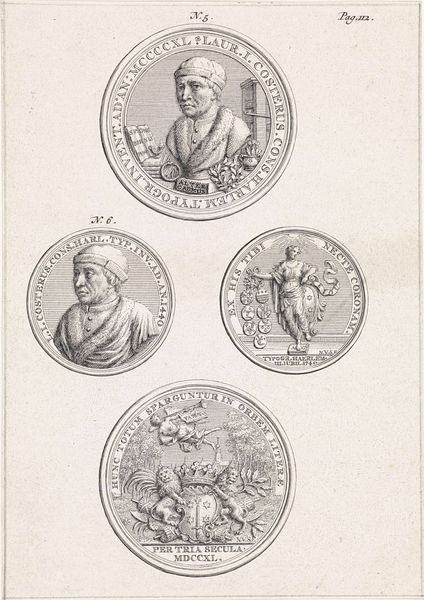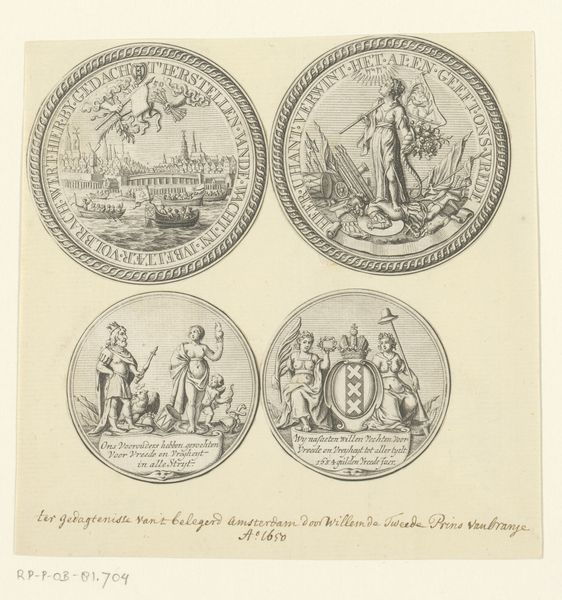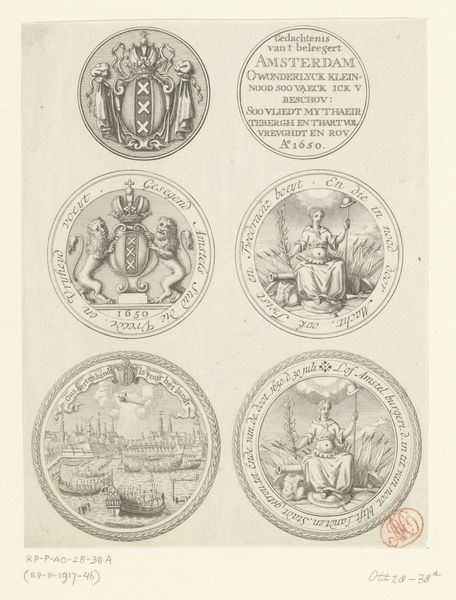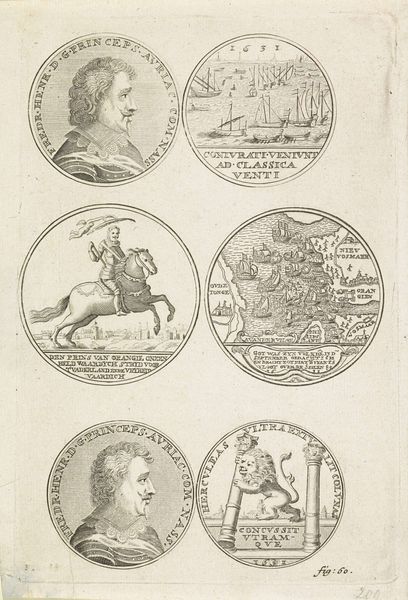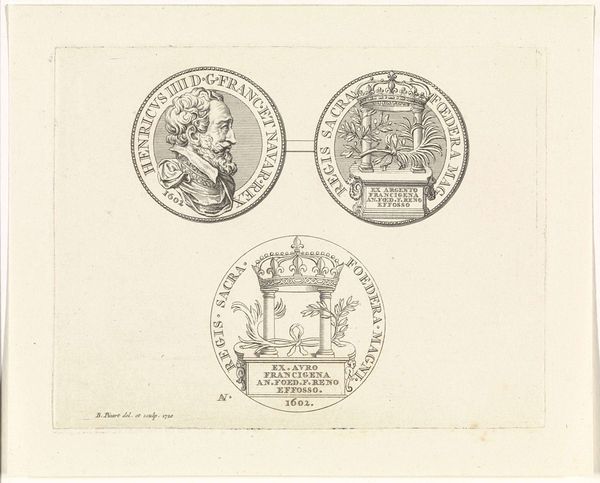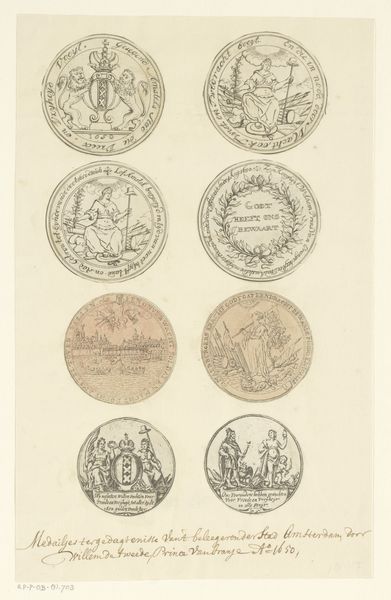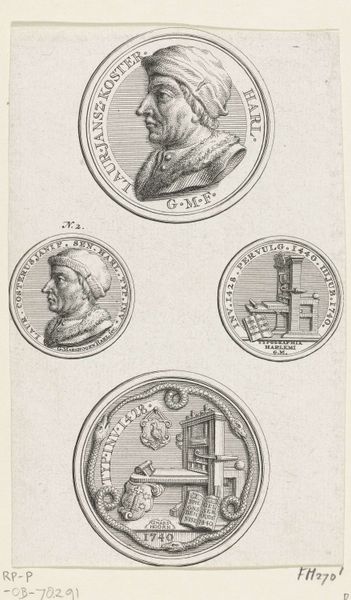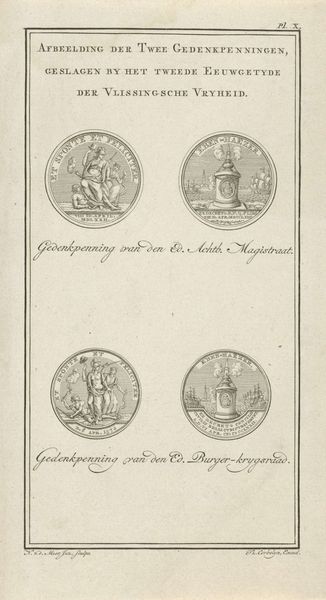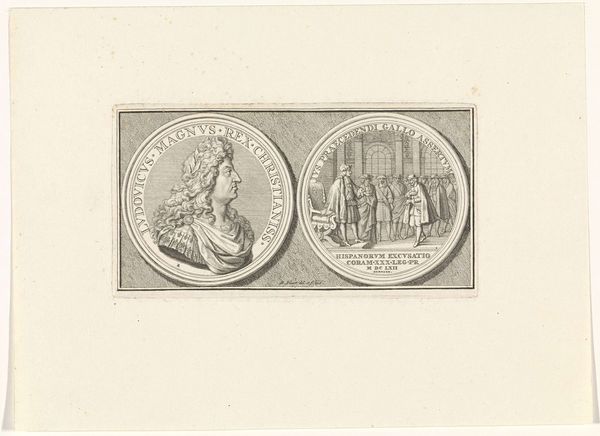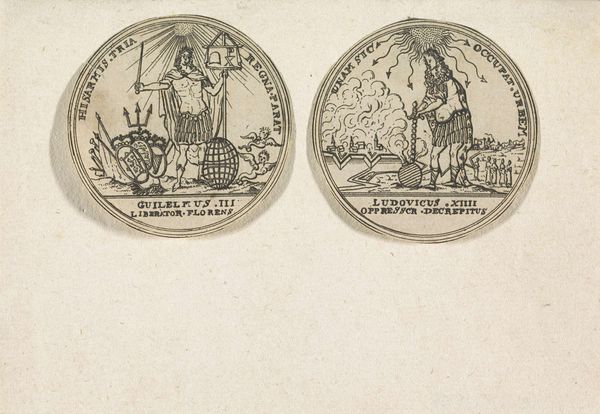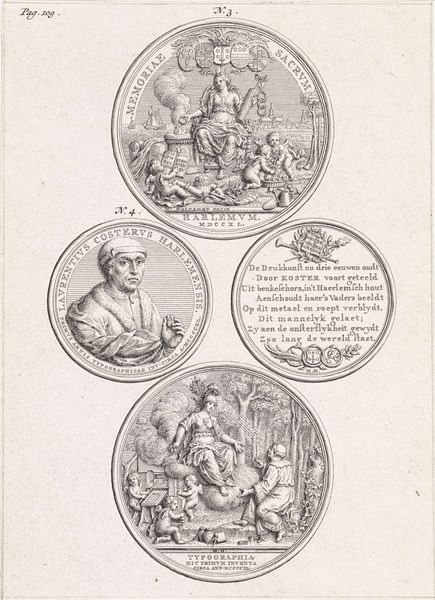
Penningen met portret van Willem V, prins van Oranje-Nassau 1772 - 1813
0:00
0:00
print, engraving
#
portrait
# print
#
classical-realism
#
geometric
#
history-painting
#
engraving
Dimensions: height 94 mm, width 80 mm
Copyright: Rijks Museum: Open Domain
These four commemorative coins were designed by Barend Christiaan van Calker around 1772 in honor of Willem V, Prince of Orange-Nassau. As objects intended for wide distribution, coins like these were typically produced using a method called striking, where a die is engraved with the design and then pressed into a metal blank with great force. Coins are more than just currency; they’re also powerful tools of propaganda. Note the prince’s portrait, but also the dense symbolism. This imagery would have resonated with the Dutch public, reinforcing Willem V’s legitimacy and authority. The coins' small scale speaks to the way that power can be concentrated into portable, reproducible forms. The very act of minting—taking raw metal and transforming it into these emblems—highlights the relationship between labor, production, and political messaging. By understanding the process, we see these coins not just as historical artifacts, but as products of a specific social and economic context. They invite us to consider how craft, design, and materiality intersect to shape our understanding of power and identity.
Comments
No comments
Be the first to comment and join the conversation on the ultimate creative platform.
